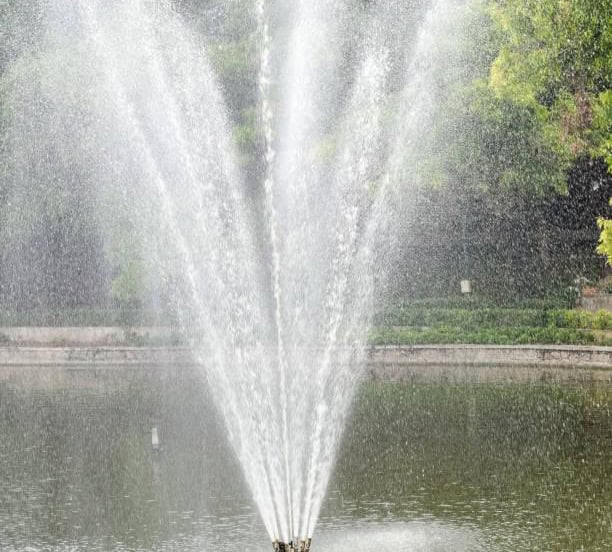Surface water pumps enable efficient transportation of water for better fountain circulation. They supply a specified zone that carries water from surface sources. When you look for surface water pumps for a fountain, you will find three basic forms, i.e., jet pumps, centrifugal pumps, and submersible pumps, each with its own features and benefits.
Jet water pumps for fountains use a mix of suction and pressure to move water, while centrifugal pumps utilize a revolving impeller to generate the flow. Submersible pumps use an impeller that is powered by a motor, which is entirely immersed in water. Surface water pumps are mostly used as a source of shallow or surface water, but they provide enough circulation to keep small ponds, lakes, and fountains aerated. Hence they are widely used for the maintenance of ponds and fountains. They help in circulating water and minimizing stagnation, thus preventing the development of algae and other undesirable animals.
Things to Consider When Buying a Surface Water Pump
In order to purchase a suitable surface for your application, the following are the aspects to consider:
- The size and horsepower of the pump you need will be determined by your application’s discharge rate and pressure requirements. The flow rate is measured by gallons per minute (GPM) and pressure by pounds per square inch (PSI). Choose the pump size and horsepower to fit your applications’ discharge rate and pressure.
- If you get a pump that is too huge, it will only cause a waste of energy and money, while a pump too small will not be able to provide enough water circulation.
- The structure and material of the pump affect its durability and lifetime. They are mostly made of metal or plastic. Some motors are built for heavy-duty reasons, while others are suitable for lighter applications.
- Two major concerns when buying surface water pumps for fountains are cost-effectiveness and energy efficiency. It would be best to opt for those with a high-energy efficiency rating. The more the pump is efficient, the less will be your energy expenditure.
Installing and Maintaining Surface Water Pumps For Fountains
Safe and successful working of surface water pumps can only be achieved by proper installation and maintenance. So ensure you employ the correct installation procedures and follow the manufacturer’s instructions when installing your pump. This may include correct grounding, wiring, and piping. Also, ensure that the pump is installed on a level surface and is tightly secured to prevent movement. GFCI outlet is always required.
When it comes to regular maintenance, you must conduct routine maintenance tasks to preserve your pump running efficiently. This may include cleaning the pump and impeller, lubricating the moving parts, checking for leaks, and examining the electrical components. If the pump is not operating correctly, you can check for any overheating, lower pressure, and blockages in the impeller or conduit. You can consult the manufacturer’s instructions or a professional technician if you need any troubleshooting advice.
To Conclude
Surface water pumps, apart from fountains, are used for various water delivery systems to provide efficient and effective conveyance of water from surface sources. Consider elements like pump size, discharge rate, energy efficiency, and structure when choosing a surface water pump. Proper installation and maintenance are also vital for safe and effective working on the pump. Following safety measures will help the pump to operate safely for years.
Featured Image Source: https://media.istockphoto.com/id/1411593297/photo/fountain-in-the-complex-of-lodhi-garden-in-delhi-india-working-fountain-in-the-lodhi-garden.jpg?s=612×612&w=0&k=20&c=Zk4N7cUwjU-UnH8Ci4FVWOzw-M7Wvgv67qxhHNXNkhs=


